Protected Under
The Sindh Cultural Heritage (Preservation) Act 1994
26°25'43.9"N 67°51'43.8"E
The Sindh Cultural Heritage (Preservation) Act 1994
The famous qawwali "Dama Dam Mast Qalandar" is dedicated to him, and has become an iconic symbol of South Asian Sufi music and devotion
The Best Time to Visit Sindh Province is Winters. Preferably from September to April Peak Summers (May to August) can get extremely hot with temperatures reaching higher than 40 °C . Hence Summers are not recommended.

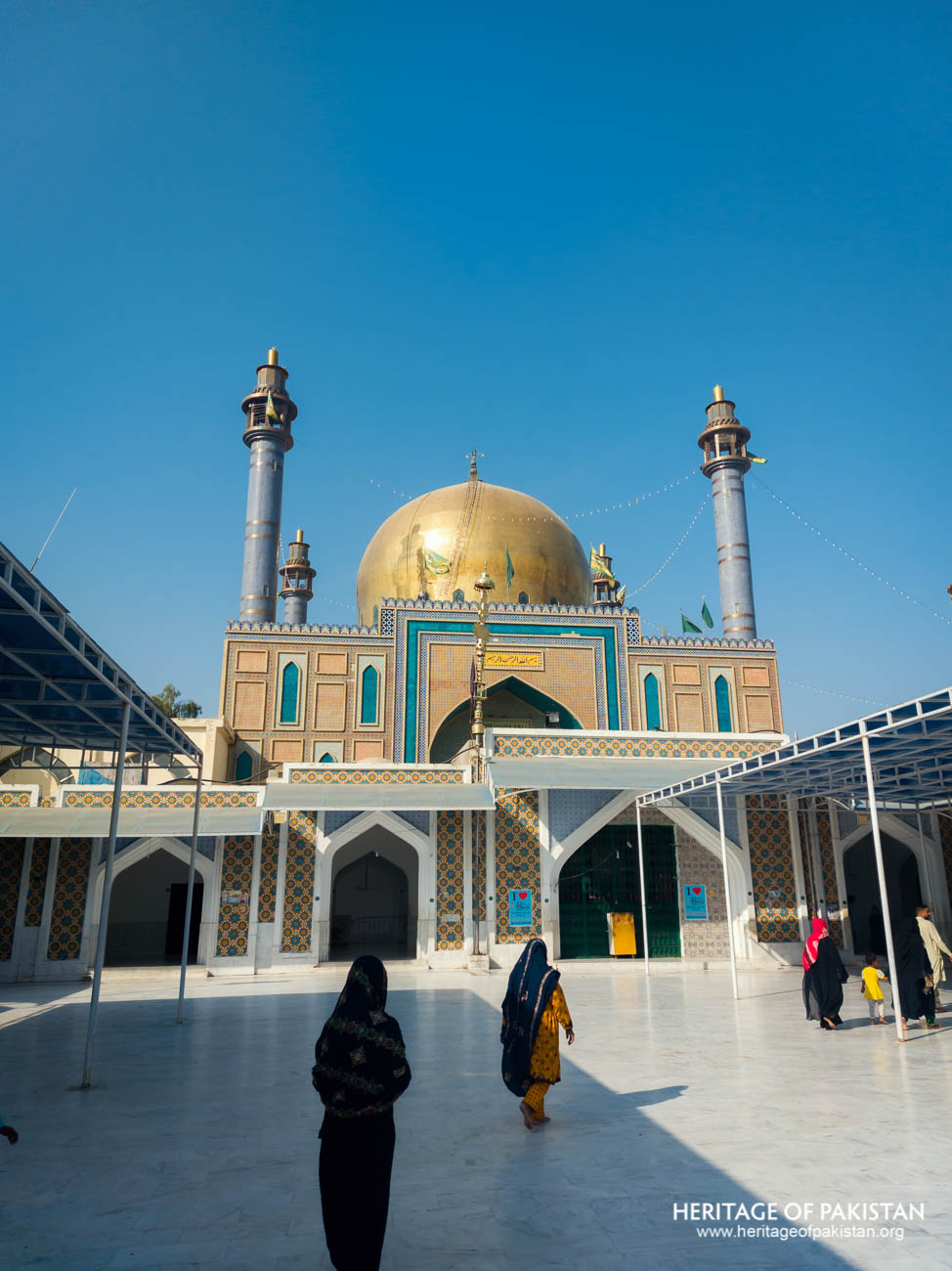
The shrine of Lal Shahbaz Qalandar is a renowned Sufi pilgrimage site located in Sehwan Sharif, a small town situated on the banks of the Indus River in the Jamshoro District of Sindh, Pakistan. Sehwan lies approximately 140 kilometers from Hyderabad and has long served as a spiritual center due to its association with the 13th-century Sufi mystic, Lal Shahbaz Qalandar. He is widely regarded as one of the most revered figures in the Sufi tradition of Pakistan.
Lal Shahbaz Qalandar’s birth name was Syed Usman Marwandi. He was born in the Islamic month of Sha‘ban in the late 12th century in Marwand, a town near Tabriz. His father was Syed Muhammad Ibrahim Kabir-ud-Din, also known as Syed Kabir-ud-Din Mujab, a member of the noble Makhdoom lineage, and his mother was a high-ranking princess. Initially, his father named him Shah Husain after experiencing a dream in which he encountered Hazrat Husain. However, the name was later changed to Muhammad Usman by his maternal uncle.
Over time, he became known by his spiritual title, Lal Shahbaz Qalandar. The title carries symbolic significance: "Lal" refers to the red attire he customarily wore, "Shahbaz" means falcon, symbolizing spiritual elevation, and "Qalandar" denotes one who transcends worldly bounds.
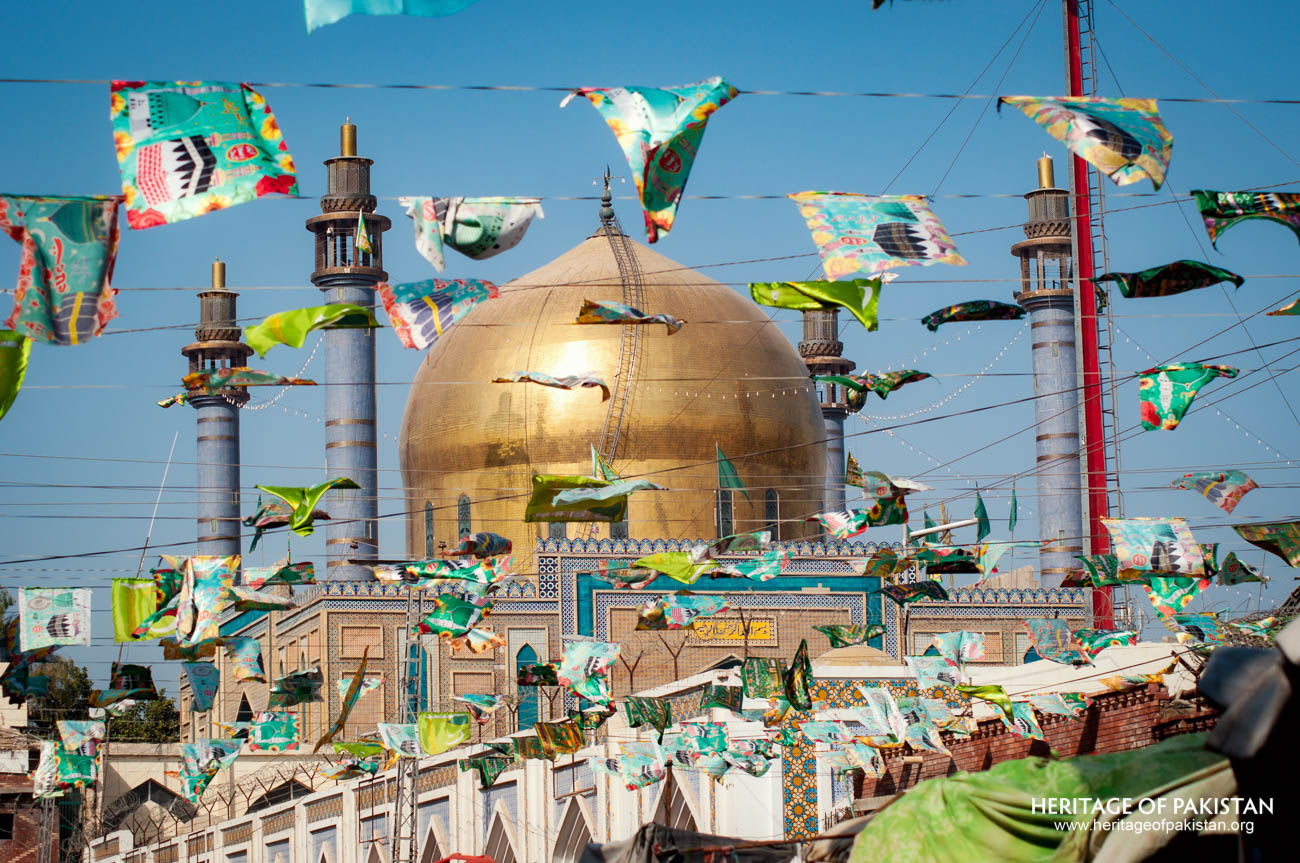
Beautiful Gilded dome of the Shrine of Lal Shahbaz Qalandar
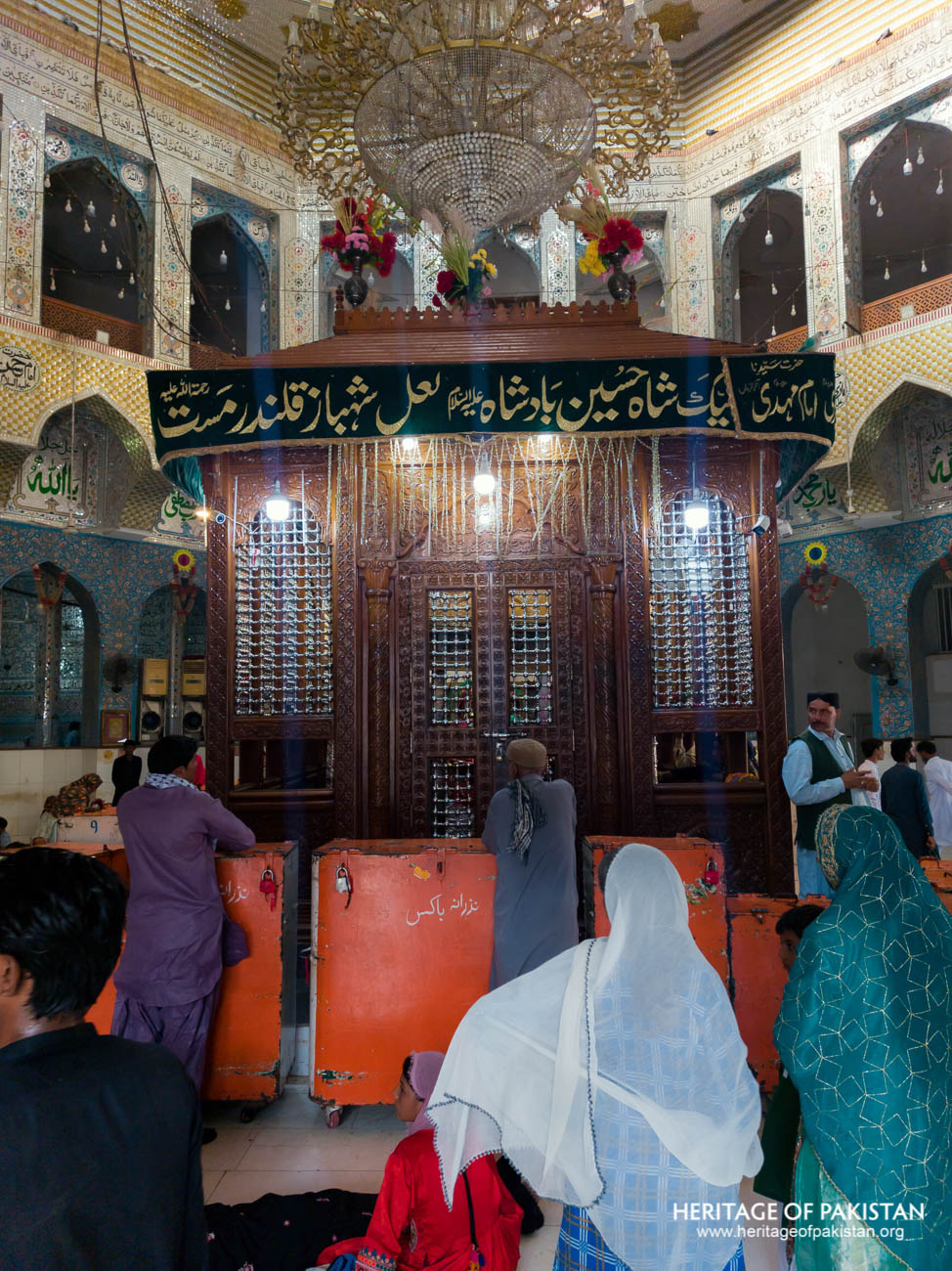
Interior of the Shrine of Lal Shahbaz Qalandar, Sehwan Sharif
According to tradition, Usman Marwandi experienced a vision in which Hazrat Ali (RA) instructed him to travel to Sindh and spread the message of God. Following this spiritual directive, he journeyed to Sindh and eventually settled in Sehwan. At the time of his arrival, it is said that the people of the region had strayed from religious principles. Lal Shahbaz Qalandar is credited with guiding the local population back toward a spiritual path aligned with divine teachings.
He was initiated into the Qalandari Silsila, a Sufi order known for its wandering mystics. He is believed to have traveled extensively and visited numerous towns and spiritual centers. According to researcher Zulfiqar Kalhoro, Lal Shahbaz Qalandar often journeyed in the company of his close companions, collectively known as the "Chaar Yar." This group included Bahauddin Zakariya (1171–1262), his son Sheikh Sadruddin Arif, Jalaluddin Surkhposh Bukhari (1192–1291), and Baba Fariduddin Ganjshakar (1173–1266). Many sites in Sindh and Balochistan are associated with his visits. Symbolic shrines commemorating Lal Shahbaz Qalandar have also emerged in locations such as Thano Ahmed Khan, Thano Bula Khan, and Thano Arib Khan.
The shrine in Sehwan Sharif is notable for its architectural and cultural significance. The dome is decorated with intricate kashi tiles in silver and gold, and the shrine features a prominent gold-plated entrance gate. It was visited by the Moroccan traveler Ibn Battuta in 734 A.H., who noted its importance as one of the most venerated shrines in Sindh.
Lal Shahbaz Qalandar’s spiritual influence continues to manifest through the annual Urs festival held at the shrine. Commencing on the 18th of Sha‘ban, the three-day event is the largest Sufi Urs in Sindh, attracting thousands of devotees from across Pakistan. The celebration includes the performance of Dhamaal, a rhythmic spiritual dance in which participants of all faiths and genders take part. The shrine also holds cultural significance through its association with the famous qawwali “Dam Mast Qalandar Mast,” which is dedicated to the saint.
The term "Qalandar" is often used to denote a mystic who has reached a high level of spiritual enlightenment and detachment from worldly ties. Lal Shahbaz Qalandar’s life and legacy continue to inspire devotion and reverence, making his shrine a lasting symbol of Sufi spirituality in the region.
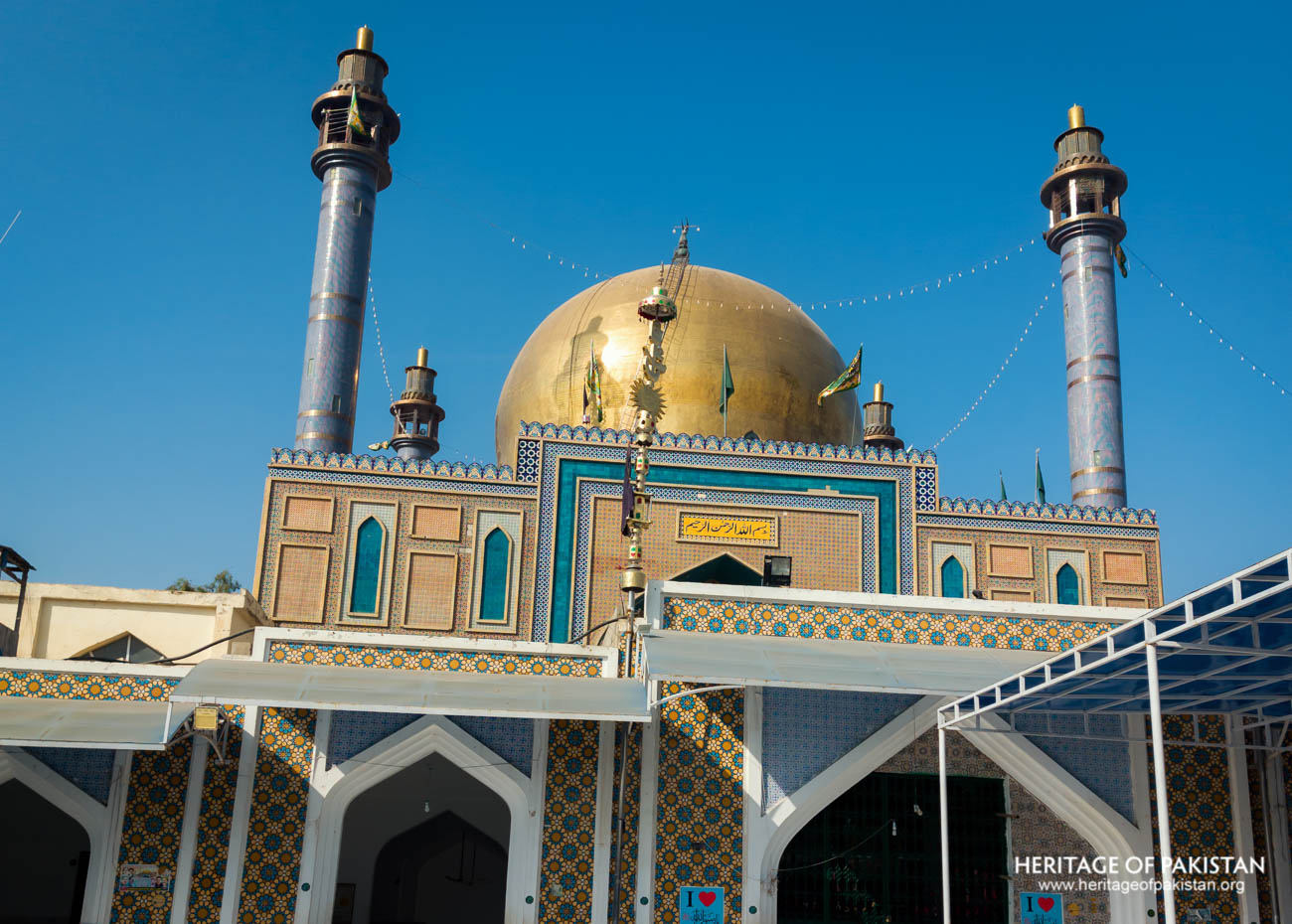
Facade of the shrine decorated with Kashi Kari tiles
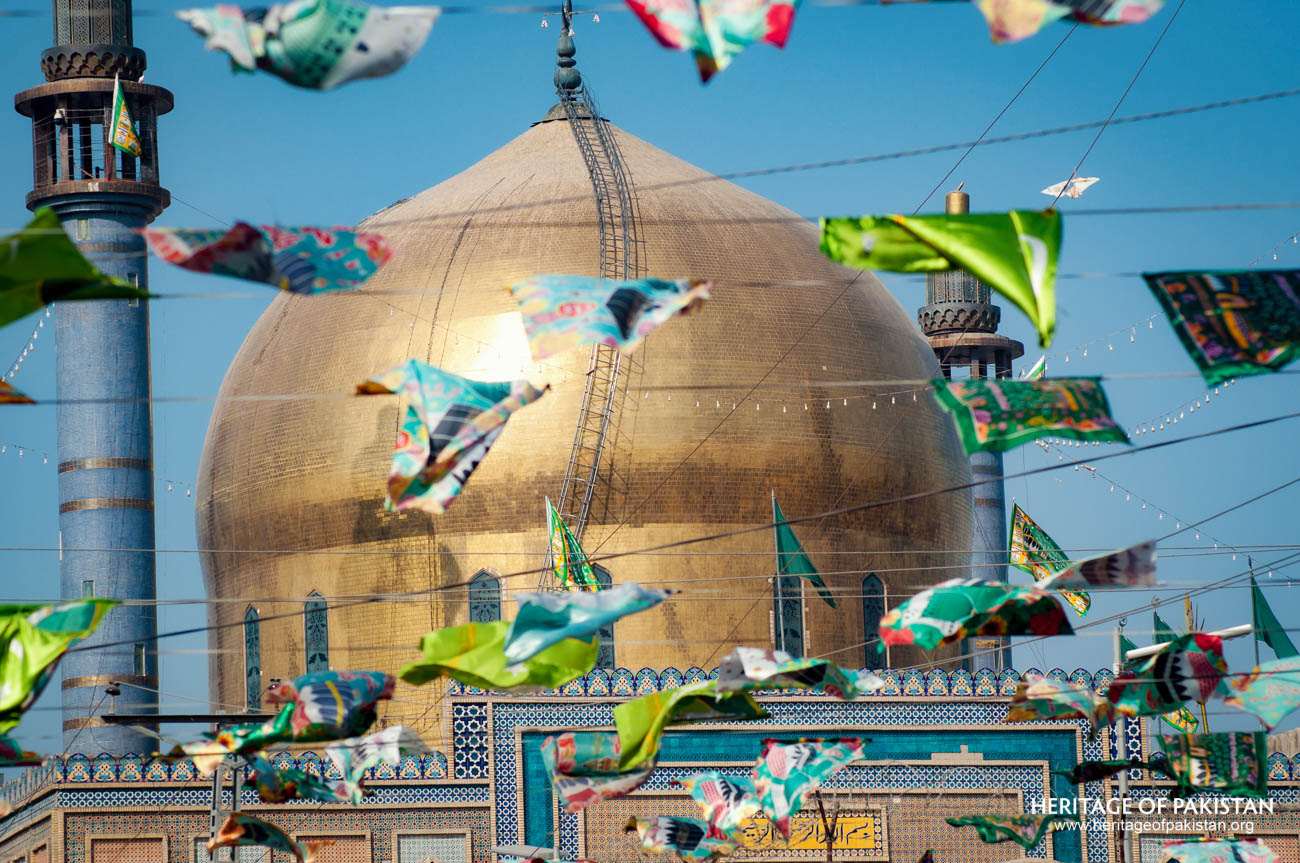

Interior of the dome of the Shrine of Lal Shahbaz
Lal Shahbaz Qalandar passed away in 1275 AD and was buried in Sehwan, Sindh. In 1356 AD (757 A.H.), during the reign of Sultan Firoz Shah Tughlaq, the tomb was constructed on the Sultan's orders. Ikhtiar-ud-Din Malik, a local governor under Sultan Firoz Tughlaq, supervised the building of the original structure, which featured seven arches and windows, along with six domes or cupolas. A central dome was added a year later in 1357.
During the reign of Jani Beg Tarkhan (1585–1599), the shrine complex underwent its first major expansion. Subsequently, in the Mughal period, further repairs were carried out in 1040 AH (1630 AD) under the governorship of Nawab Syed Dinder Khan, also known as Syed Bhoora, during Emperor Jahangir’s rule. Under Emperor Shah Jahan (1628–1659), the shrine saw further enhancements. Another significant phase of development took place during the reign of Mian Ghulam Shah Kalhoro (1757–1772), who added a prominent facade decorated with glazed Kashi tiles and undertook extensive surface ornamentation of the shrine.
Following the independence of Pakistan, the shrine came under the administration of the Auqaf Department, which continued maintenance and restoration efforts. During the tenure of Prime Minister Zulfiqar Ali Bhutto, substantial restoration was undertaken. This included the reconstruction of the floor, repair of the adjoining mosque, and installation of mosaic Kashi tiles. Golden gates imported from Iran were also installed at the entrance, contributing to the shrine's evolving architectural identity.
On 25 July 1994, the shrine’s structure collapsed. Reconstruction efforts commenced under the leadership of Prime Minister Shaheed Mohtarma Benazir Bhutto. The Dargah was rebuilt entirely, incorporating traditional and new design elements. A gilded dome was constructed, and the facade was redecorated with Kashi tiles. A new Dhamaal courtyard was also developed to accommodate ritual practices.
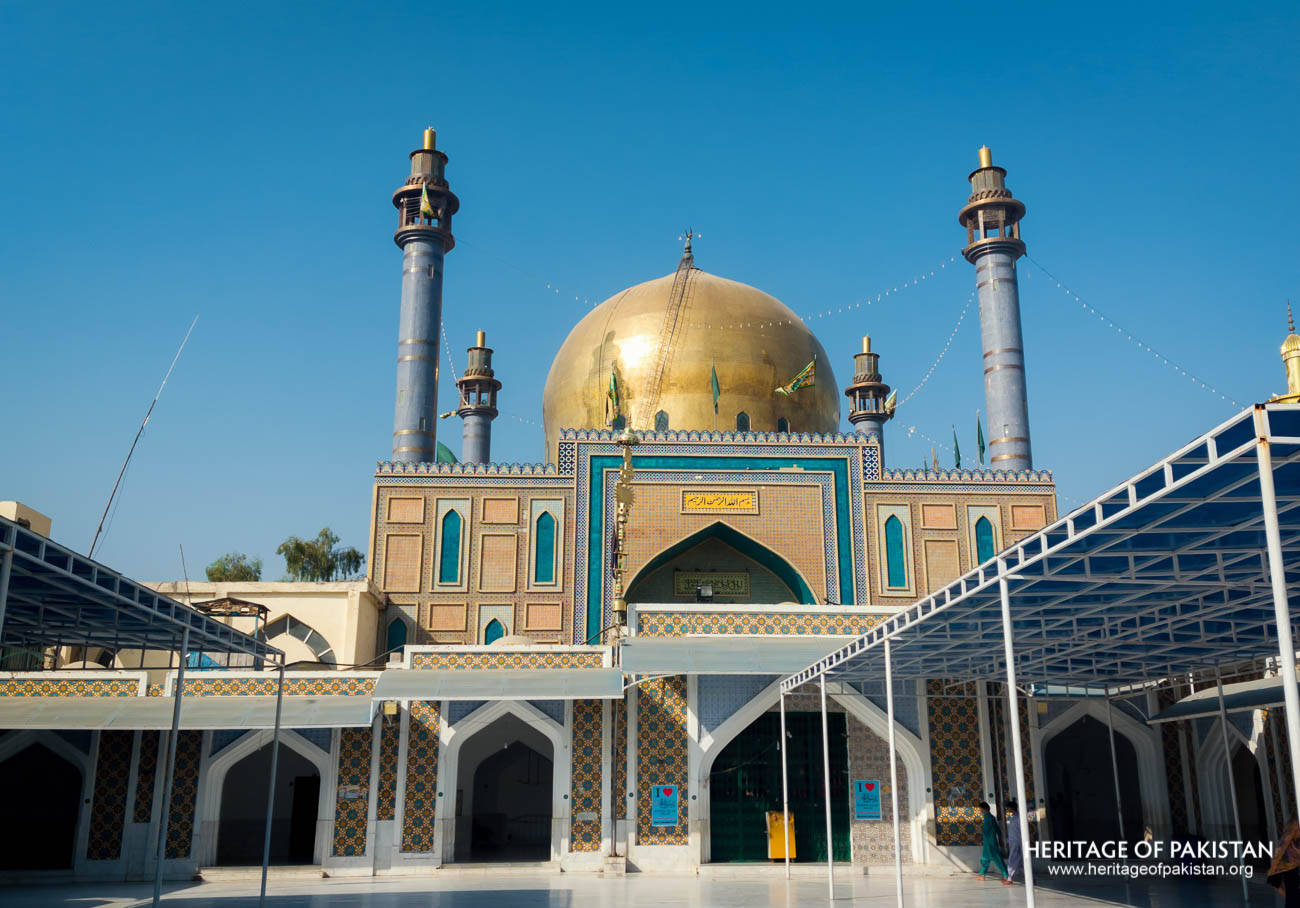
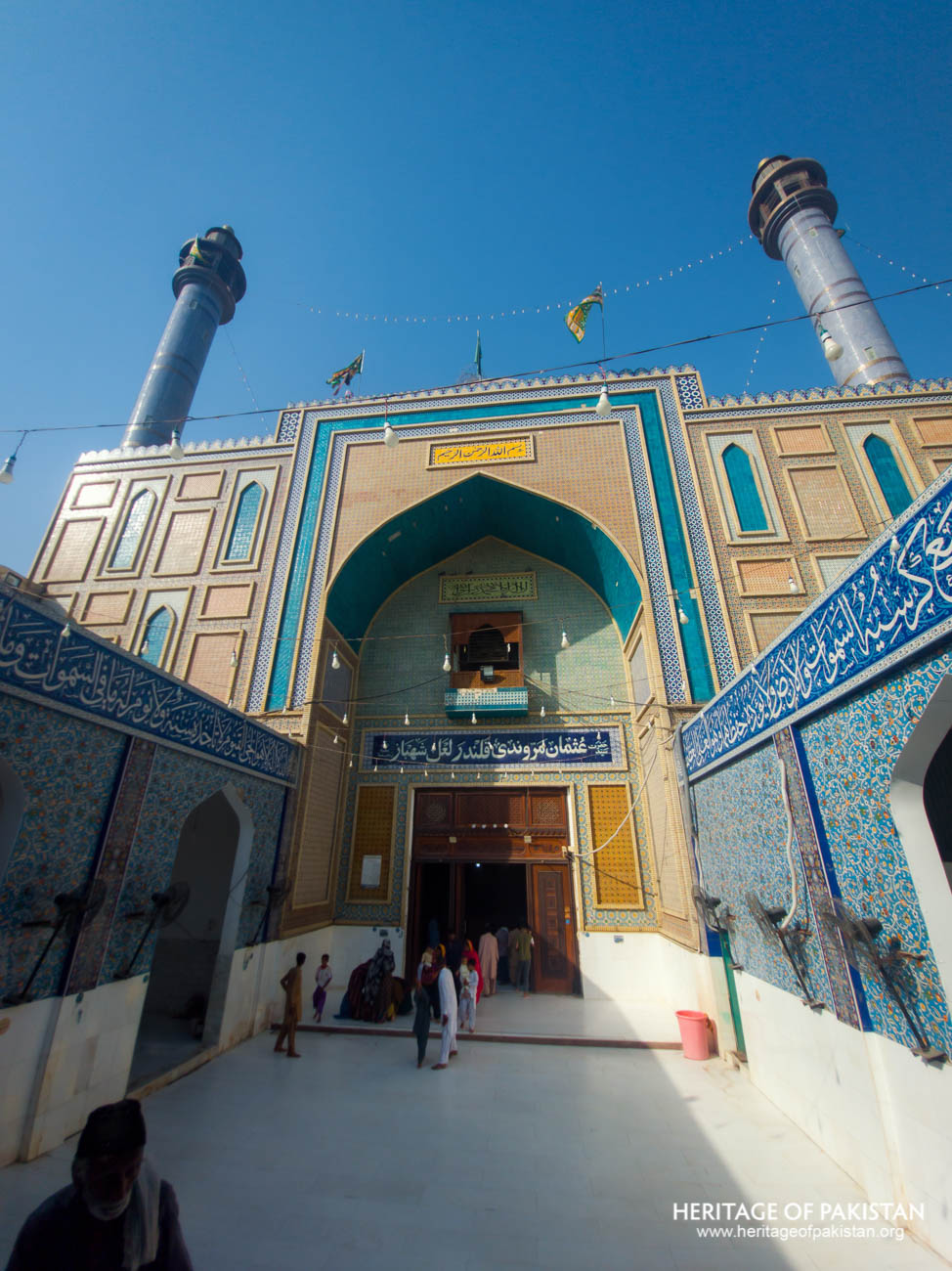
Recessed Archway on the entrance of the shrine
The present shrine structure follows a classic tomb layout. It is built on a square plan with a central dome and minarets at each of the four corners. The facade features geometrically patterned Kashi tiles in multiple colors, including blue, green, and yellow. The main entrance comprises a recessed archway or Pishtaq, also adorned with multicolored glazed tiles. A carved wooden panel door with a lattice screen forms the main gateway, above which is inscribed in calligraphy the name “Syed Hazrat Usman Marwandi Qalandar Lal Shahbaz.” Above the entrance arch, a wooden jharoka is placed at the center for decorative effect.
The interior of the shrine is embellished with glazed tilework and intricate mirror decoration. The inner surface of the dome features detailed aina kari (mirror work), with the name "Allah" inscribed in the center and surrounded by other divine names. These elements collectively reflect a continuity of architectural and spiritual reverence over centuries.


Discover the Lal Shahbaz Qalandar image gallery and immerse yourself in photographs

All Photographs by Syed Noor Hussain and Sania Azhar.
All Rights Reserved. Photos may be used for Non-Commercial, Educational, Artistic, Research, Non-Profit & Academic purposes.
Commercial uses require licensing agreement.


Add a review